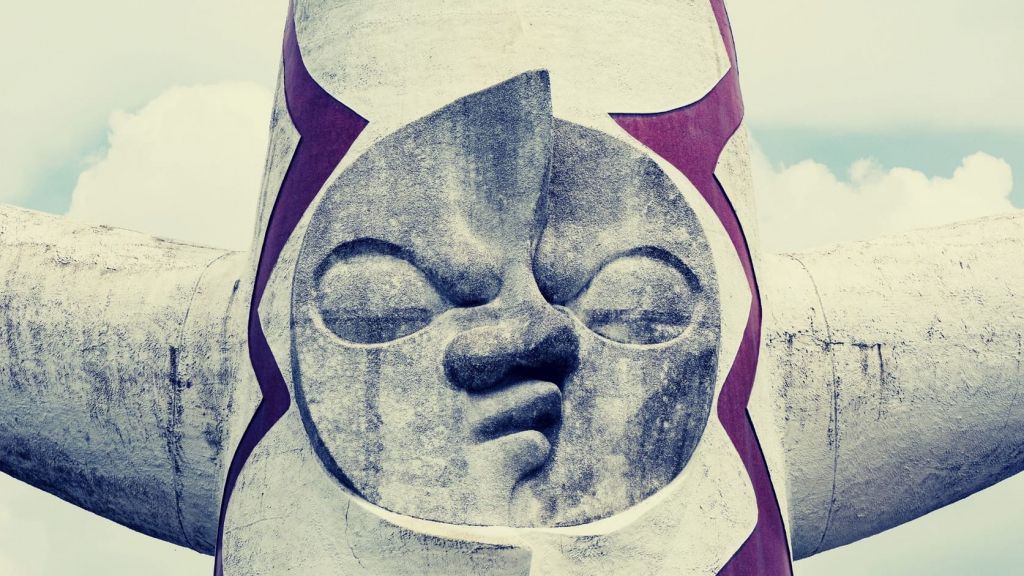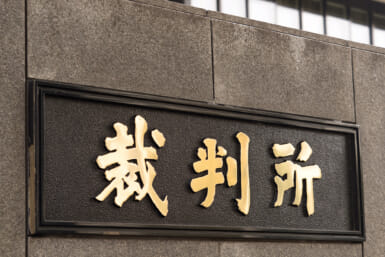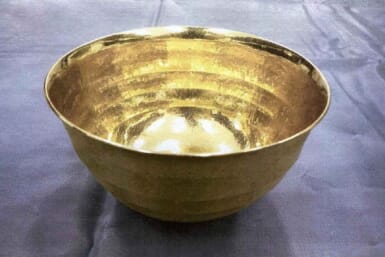With Tokyo Weekender turning 50 this year, we’re taking some time to reflect on some of the biggest news stories that gripped the nation over the past five decades. We’re starting off with the 1970s when TW was founded: an era of stable economic growth, exciting new technology, political scandals and unsuccessful attempts to overthrow the government.
Osaka Expo Launches, Showcases Rock from the Moon
Under the theme “Progress and Harmony for Mankind,” the Osaka Expo opened its doors to the public on March 15, 1970. In the six months that followed, a record 64 million visitors (only surpassed by Shanghai in 2010) came to have a look at the various pavilions represented by 77 countries. Taro Okamoto’s Tower of the Sun building was seen as the symbol of the event, though it was a large rock from the moon brought back by Apollo 12 astronauts in 1969 that drew the biggest crowds. Expo ‘70 also featured the first-ever IMAX film: Tiger Child.
Yukio Mishima’s Coup D’etat Fails, Commits Seppuku
As well as being one of Japan’s most influential writers, Yukio Mishima was also known for his controversial right-wing views. In 1970, the revered author along with four other conspirators stormed a Tokyo military base and tied the commandant to a chair. They then tried to persuade the SDF to join them in a coup against the government to overturn the 1947 constitution, restoring the power of the emperor. The plan failed and Mishima committed seppuku. His biographer John Nathan suggested the coup was a ruse and his intention all along had been the ritual suicide.
The Koza Riot: Okinawan Locals Rise Up Against US Military
Twenty-five years of built-up anger at the US military occupation in Okinawa and the Status of Forces Agreement (that exempted the American armed forces from Okinawan justice) erupted in December 1970 with around 5,000 locals and hundreds of American soldiers clashing in Koza (modern day Okinawa city). The tension that had been brewing over a long period reached a boiling point earlier in the year when a serviceman was acquitted in martial court despite killing a civilian in a hit-and-run incident. The 1971 Okinawa Reversion Agreement returned the prefecture to Japanese sovereignty. However, considerable US military presence was to remain.
Asama-Sanso Terrorist Incident Becomes Historic TV Spectacle
A far-left terrorist organization established in the summer of 1971, the United Red Army tortured and killed 14 of its 29 members in less than a year. Within a month two defectors were lynched and burned. The other 12 victims were murdered at a winter training camp for “lacking revolutionary commitment.” With the police closing in, five militants escaped, armed with rifles and explosives. They seized the Asama-Sanso mountain lodge near Karuizawa, taking the keeper’s wife hostage. The standoff became a historic TV spectacle that lasted 10 hours. When the radicals were arrested the combined audience share of NHK and commercial stations peaked at 89.7 percent.
Sapporo Olympics Gets a Second Chance
Hokkaido’s capital city was due to host the Winter Olympics in 1940 but the Second Sino-Japanese War forced the competition to be scrapped. Thirty-two years later Sapporo was finally given the chance to stage the prestigious event. The highlight for locals came in the normal-hill ski jumping competition with Yukio Kasaya winning the country’s first-ever Winter Olympic gold medal. Fellow countrymen Akitsugu Konno and Seiji Aochi secured the silver and bronze medals, completing a clean-sweep for the home nation.
Oil Embargo Leads to Toilet Paper Panic Buying
Sound familiar? In 1973, the Organization of Arab Petroleum Exporting Countries (OAPEC) proclaimed an oil embargo on countries perceived to be supporting Israel during the Yom Kippur War. That included Japan, a nation with a particularly high foreign oil dependency (99.7 percent). Rumors soon spread about potential shortages of certain essential items despite the fact that the flow supply was sufficient to cover the demand. People started to panic, making long lines at supermarkets to hoard daily necessities such as toilet paper, tissues, soap and kerosene.
The Last Soldiers of World War II Discovered
For 29 years intelligence officer Hiroo Onoda remained at his jungle post in the Philippines, refusing to believe World War II was over. In 1974 he was found by Norio Suzuki, an explorer on an adventure to locate “Lieutenant Onoda, a panda, and the Abominable Snowman, in that order.” Onoda’s commanding officer Major Yoshimi Taniguchi came to the jungle to relieve him of his duty. Later in the year Taiwan-born soldier Teruo Nakamura became the last-known holdout of the Imperial Japanese army to surrender. His hut in Indonesia was accidentally discovered by a pilot.
Olympic Gymnast Shun Fujimoto Scores 9.7 With Broken Kneecap
Representing Japan in the men’s artistic team gymnastics event at the 1976 Montreal Olympics, Shun Fujimoto broke his kneecap during the floor routine. Not wanting to worry his teammates (Japan and USSR were neck-and-neck), he continued in silence scoring 9.5 on the pommel horse. Up next was the rings that required an eight-foot dismount. Remarkably, he kept his balance, recording a personal best 9.7. The fall dislocated his already broken knee and damaged ligaments. Although he was then forced to withdraw, his determination helped Japan win its fifth consecutive team gold.
The Lockheed Bribery Scandal: Prime Minister Sent to Prison
In December 1974, the same month that former prime minister Eisaku Sato became Japan’s first Nobel Peace prize recipient, his successor Kakuei Tanaka resigned as the country’s leader due to allegations of shady real estate and financial dealings. Just over 18 months later, he was arrested for allegedly accepting a $1.8 million bribe from the American defense contractor Lockheed Corp in return for lucrative aircraft contracts. The trial concluded in 1983 with the disgraced politician being sentenced to four years in prison. Despite his incarceration, Tanaka kept his seat at the Diet until 1989.
Megumi Yokota’s Abduction by North Korea
On 15 November 1977, 13-year-old Megumi Yokota was walking home from badminton practice when she suddenly disappeared without a trace. Two agonizing decades later, her family received a call informing them that she’d been kidnapped by North Korean agents. She was one of 17 Japanese citizens officially recognized to have been randomly abducted by the communist regime between 1977 and 1983 (the actual number is thought to be higher). Many of the victims were said to have been put to work, teaching North Korean special forces the Japanese language and about the culture to help with future espionage missions. Megumi’s father, Shigeru Yokota, passed away this year without fulfilling his life-long dream to reunite with his daughter.
Monkey Magic: Local Dramas Go Global
During the Seventies two Japanese drama series, both based on classic Chinese novels, became international hits. The Water Margin, first aired in 1973, detailed the trials and tribulations of heroic outlaws rebelling against a corrupt government. Five years later, Monkey was released. An adaptation of the book Journey to the West (Saiyuki in Japanese), it focused on a group of pilgrims traveling from China to India to retrieve some holy sculptures. A cult classic, it was also known for its soundtrack, including the opening and ending songs, “Monkey Magic” and “Gandhara” by the rock band Godiego.
Sony Debuts the Walkman
On 1 July 1979, 16 years after Dutch company Phillips developed cassette technology, Sony released the TPS-L2 Walkman, a personal cassette player that revolutionized the way people listened to music. The organization’s co-founder Masaru Ibuka, tired of lugging around the bulky TC-D5 cassette recorder on business trips, asked executive deputy president Norio Ohga to design a playback-only stereo version optimized for headphone use (the original device had two earphone jacks so two people could listen at once). Predicted to sell around 5,000 units monthly, it sold upwards of 50,000 in the first two months.
Read the headlines from TWs very first issue
On February 13, 1970, editors and publishers Susan Scully and Millard (Corky) Alexander delivered the first issue of Tokyo Weekender with the announcement, “That’s us, folks–a spanking, new weekly publication.” To see our roundup of the topics and issues that made headlines 50 years ago in Tokyo in that very first issue, read this article.
In The Charts
Best-selling Single: Oyoge! Taiyaki-kun (Masato Shimon)
Best-selling Album: Koori no Sekai (Yosui Inoue)
Popular Films: The Yellow Handkerchief, The Tora-San series (Yoji Yamada), Dersu Uzala (Akira Kurosawa), Battles Without Honor and Humanity series (Kinji Fukasaku)
New Releases: Doraemon manga (1970), Hello Kitty (1974), Space Invaders (1978), Sony Walkman (1979)









